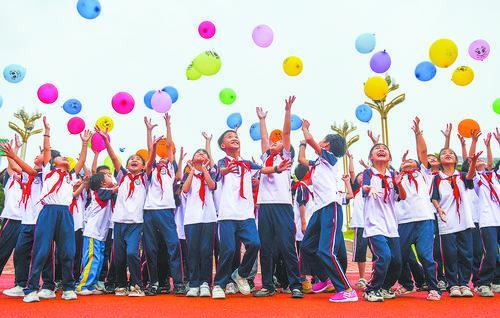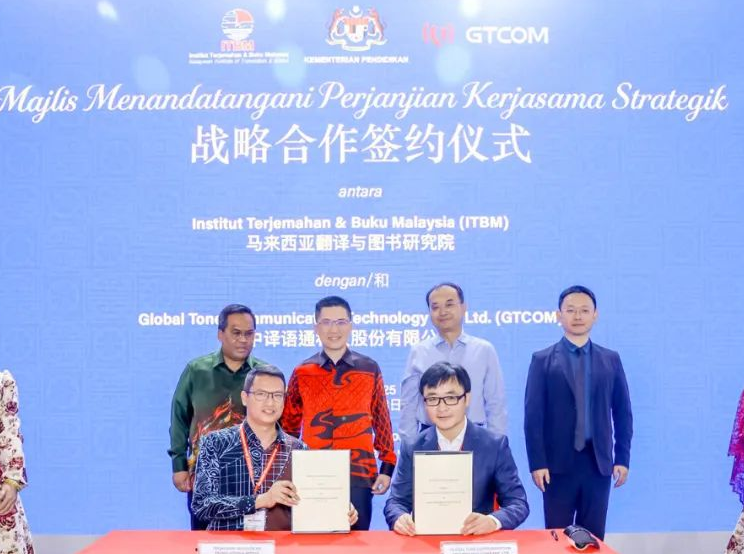Chinese People's Lives Change for the Better
In the 75 years since the founding of the People's Republic of China (PRC), the nation has undergone a remarkable evolution across all aspects of people's daily life. In areas such as clothing, food, housing, transportation, and consumption, the transformations have been magical, reflecting upgrades in people's lives through the long march towards modernization. However, the shift is not just about material progress; it also reflects social progress, advancements in sci-tech, and an increasingly prominent presence on the world stage.

Fashionable to the fingertips
Over the last 75 years, the clothes of the Chinese have shifted from practicality to personalized styles, driven by innovations in materials and technology. In the early 1950s, clothes were mostly monochrome. But as people embraced new lives, they were just as eager to dress with more changes. Therefore, China has constantly developed the textile industry.
In 1957 a delegation was sent to Japan to acquire the expertise and equipment for chemical fiber production. In 1964, the State Council approved machinery imports for the first vinylon plant in Beijing and by 1973, around 7.3 billion RMB had been invested in foreign chemical fiber technology, resulting in the establishment of four major chemical fiber enterprises.
Independent innovation played a vital role in the development of the industry. In 1960, new factories for viscose fiber were established, using cotton linter and wood pulp as primary materials. Research was undertaken to find suitable raw materials, and by 1964, a specialized headquarters was created for artificial fiber development.
In the 1970s and 1980s, 10 key synthetic fiber projects were completed, significantly advancing China's synthetic fiber industry and meeting the nation's clothing demands. The domestic market matured, and Western influences introduced diverse clothing styles, including dresses, jeans, and down jackets.
After joining the World Trade Organization in 2000, China aligned with global fashion trends, and the presence of international brands increased. People wanted to express their personality through their clothes and styles became diverse, offering a wide range of options.
In the last decade, digital technology revolutionized fashion in China. The launch of Xiaomi's first smart bracelet in 2014 marked a leap in wearable tech. Companies like Huawei and Oppo are enhancing R&D, leading to the widespread use of Bluetooth headsets and the rise of locally made e-watches with real-time translation for travelers.
Eating healthy
The Chinese are connoisseurs of good food but food supply was a challenge in the 1950s. People had to buy food with ration coupons, known as "liangpiao", from the supply and marketing cooperatives. Without coupons, you could not buy grains, oils, meats, fabrics and other essential necessities, and even with coupons, you couldn't get more than the allotted amount, no matter how much money you had.
During the Spring Festival, if a child was lucky enough to have a tiny piece of tanghulu, the traditional Chinese snack of candied fruit skewered on a stick, it was enough to spark envy among their peers.
As China became more developed and open, and agricultural technology advanced substantially in the 1990s – most notably the development of hybrid rice by Chinese agronomist Yuan Longping – people had enough to eat and wished for variety in their diets.
In the 21st century, modern agricultural technologies such as hydroponics and precision farming significantly improved crop yields and quality. Improved food safety testing technologies ensured that products were effectively monitored from farm to table.
By the time of the 18th National Congress of the Communist Party of China in 2012, people were seeking a healthier, wellness-focused diet. Whole grains, fruits, and vegetables replaced meats as popular healthy choices and could be easily found in the market. Discussions about how to stay healthy became common. For restaurants, it became essential to provide, along with quality food, a good environment and emotional value for customers.
Living in greater comfort
When the PRC was founded, a house usually meant a basic shelter. Most urban residents lived in compact bungalows or in houses grouped around narrow alleyways, while rural dwellers resided in mud-brick, thatched-roof homes. Urbanization stagnated because of the urban-rural dualistic social structure.
Most residences had no electricity or tap water and many homes did not have toilets. Grass, soil, and straw were the main building materials, and the walls cracked easily.
In the 1970s, the housing allocation policy led to a preponderance of tube-shaped apartment buildings. However, the lives of the Chinese did not change hugely over the 30 years. By 1980, the proportion of the urban population in the Chinese mainland had increased from 11.2 percent to only 19.4 percent, far below the global average of 41.3 percent.
Reform and opening up started in 1978 and was like timely rain is to crops. Several encouraging policies were implemented, prompting people to "move into cities and build them up." Urban and rural market trade developed rapidly, and with the restoration of the national college entrance examination system let people enter the city universities, the urban population began to grow significantly.
With the widespread use of new building materials such as bricks, cement, and tiles, better-quality residential buildings began to be constructed, and the real estate market took off in the 1980s. Citizens gained the option to purchase their own homes, significantly altering their perceptions of property and the value associated with it. Modular furniture and sofas started to enter households, as well as telephones and TV sets.
After 2000, the acceleration of digitization enabled seamless integration of lighting, television sets, cleaning robots and other home appliances. With just a tap on their smartphone, people could effortlessly control all these devices.
While indoor living conditions improved, there also began a growing pursuit of a lifestyle that is "closer to nature."
For instance, according to a government report, by this year 91 percent of Beijing residents will have parks and small green spaces within a 500-meter radius.
Transport on fast track
Traveling has undergone a spectacular change as well.
In the early days of the republic, the infrastructure was underdeveloped. The railway system primarily relied on steam locomotives, and there were only a few airports. In cities, residents mainly used bicycles and public transportation.
Many elders can still recall buses running on coal gas due to the severe shortage of gasoline and diesel. A big black bag was installed on every bus's roof to store these gases. For long-distance travel, there were the iconic green trains first built in the 1950s.
From 1950 to 1980, China's transportation landscape underwent a profound transformation. New roads replaced old dirt paths. Hard-to-build railways like the Chengdu–Chongqing line were successfully implemented after engineering feats involving building tunnels through formidable mountain ranges, opening new corridors for travel. On October 1, 1969, China's first subway, the Beijing Subway Line 1, was opened, marking a milestone in the country's urban transit.
Since 1980, China's transportation sector has entered a rapid growth phase. A variety of new survey and design technologies, along with theories and applications in traffic engineering, have been implemented. New technologies have led to emulsified asphalt and prestressed concrete bridges. As a result, roads have significantly improved. In 1988, China's first highway, the Hujia Expressway going from Shanghai to its satellite town Jiading, was opened to traffic.
It was during this time that the term "chunyun" – the Spring Festival travel rush – first appeared in Chinese newspapers. Overcrowded green trains became an enduring image of this period. Air travel started but to board an aircraft, people had to apply in advance. Influenced by trends from abroad, motorcycles also gained popularity around this time.
As the new millennium arrived, the highway and railway network expanded swiftly, connecting major cities and regions. Private cars started to become popular and travel by air became more convenient and cheaper.
By the end of 2023, China's operational railway network reached 159,000 kilometers, according to official data. The high rail train in China has now entered the era of "400 kilometers per hour". Highways surpassed five million kilometers and navigable waterways exceeded one million kilometers. There are 259 civil aviation transport airports, and annual inter-regional passenger trips exceeded 61 billion.
Currently, more advanced technologies are transforming transport further. New energy vehicles have rapidly emerged, making China the world's largest market for such vehicles. Shared bicycles, shared electric vehicles, and online car-hailing services have transformed people's travel habits, offering more convenient choices.
In the future, China will focus on low-altitude travel methods and driverless technology. Some autonomous vehicles are already operating on the roads, while drone models are being tested for transporting human passengers.
Modernization drive
Thanks to economic development and social progress, people's living standards have improved from requiring basic necessities to pursuing modern conveniences. This transformation is closely linked to the nation's growth and the increasing demands of the people.
A major change is the widespread use of electricity, which has become an indispensable part of our lives. But back in 1949, only 4.3 billion kWh of electricity was generated and only big cities like Beijing and Shanghai had power. Due to coal shortage, many areas would "shut off power for three days to ensure electricity for four days," making candles and flashlights a household necessity. Since then, China embarked on large-scale construction of power plants, becoming the largest power-generating country in the world today.
Following 30 years of R&D, numerous simulated thermal power plants and hydroelectric stations have been built. In 1978, China's electricity generation reached 256.6 billion kWh. People scrambled to purchase the "four big items"— TV sets, refrigerators, air conditioners, and washing machines.
In the 1990s, intelligent electronic devices boomed. CD players, portable audio players and video game consoles swept the nation. In 1994, China connected to the world wide web for the first time, and many Chinese websites such as NetEase, Sohu, and Sina emerged.
From computer games to smart phones, the first 10 years of the 21st century witnessed a frenzy of device upgrades. It was also when the Chinese started thinking about digitization.
After 2010, smart devices have become widely adopted, and 4G and 5G have brought greater convenience. Applications such as WeChat, mobile payments, fitness apps, live-streaming, and e-reading have proliferated, covering every aspect of people's lives. Today, China has become the world's only market with over one billion users online simultaneously. In the future, as technology continues to advance, more innovative applications will emerge, further enhancing people's quality of life.







